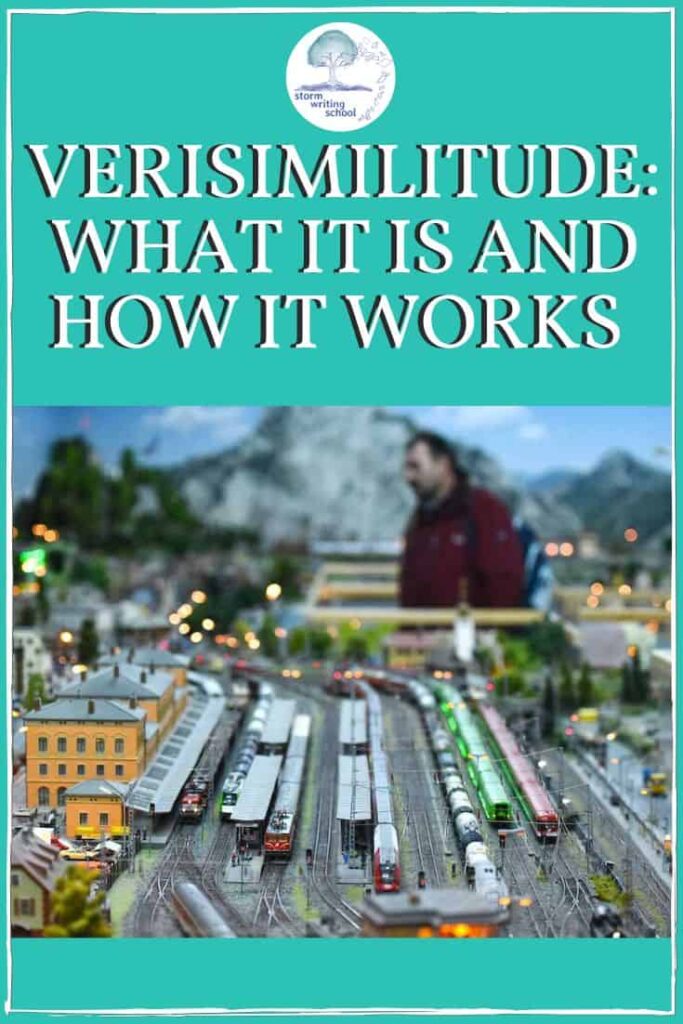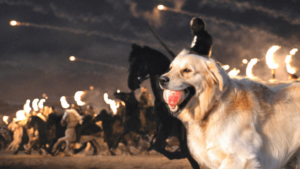What is it?
Verisimilitude roughly equates to the credibility or believability of a piece of fiction. It means, literally, “similar to truth,” and it’s all about getting the reader to suspend disbelief and see realistic depictions of character, setting, and events.
Realistic does not mean realist, though. Verisimilitude is as much a requirement of fantastical stories as it is of realist tales. One might argue, in fact, that all stories, no matter how surreal and alien, need to be rooted in human reality, given that readers are human. If we are to be moved, persuaded, or engaged with a story, it must resonate with something within our human experience.
Truth
If we’re writing fiction, we’re obviously not creating a journalistic account of something that has happened. That is, we’re not all that concerned with literal truth. We don’t need fact-checking.
What we need is truth having to do with “laws of behavior.”
Now, by “laws” here, I don’t mean prescriptive laws in a legal sense. I mean something more like “laws of nature” or “laws of physics”—descriptive laws about the way things work in our world.
And I think verisimilitude really comes down to a story’s following known laws of behavior of objects and of people.
Deviations
You’re allowed some deviations from truth, of course.
In any given work of fiction, you can tweak laws, norms, or historical facts about our world. Maybe you have dinosaurs and people co-existing on earth. Maybe you have characters with super powers. Maybe you have a society in which both gender and sex don’t exist. Maybe the Allies lost WWII.
But for every norm you mess with, you have several others that are consistent with the world we know—that is, consistent with laws of human behavior and laws of physics.
In other words, if you’re going to make up stuff, you need to surround those fabricated things with true things.
An Example
In the movie How to Train Your Dragon, the protagonist Hiccup shoots down a night fury dragon. Such animals do not exist, and if we’re talking about fire-breathing and other special abilities, are maybe even a physical impossibility.
However, Hiccup uses the laws of physics to send a projectile through the air to tie up the dragon. He does it because he wants his father’s approval. The dragon acts a lot like wild, untamed animals in our world. Hiccup gains its trust in ways very similar to how people have sometimes tamed wild horses. He has a very plausible sarcastic teen attitude. He gains confidence when he has friends who believe in him.
The story is consistent with the truth. Again, it follows a lot of the laws of the behavior of objects and people.
So I would argue that verisimilitude is all about planting fictional elements in realistic soil.
Character
For characters, verisimilitude is mostly about behavior. You can make your characters alien or larger than life, but their actions will feel more credible if 1) there’s some cause/effect behind them, or 2) they reflect universal human needs (for security, belonging, or esteem, etc.; see Maslow’s hierarchy).
It helps, too, if character behavior is internally consistent—that is, if a character’s actions fit with the personality and attitude they have displayed up to that point. You can certainly have changes come about. Perhaps a pacifist becomes violent or a rule-follower rebels late in the story, but that’s where cause/effect comes in. As long as we can see the stimulus for a character’s response, changes in expected behavior will make sense. (See The Key to Epiphanies, Realizations, and Moments of Clarity for more.)
Setting
For setting, verisimilitude usually comes down to sensory detail. If you want us to believe that a character works in a factory or sails on the open sea, concrete, physical detail about the factory or sailboat/ocean will lend the story verisimilitude.
In certain genres, you’ll also want to watch for internal consistency within the story world. Historical fiction needs to keep a close watch for anachronisms, for instance. Fantasy needs some internal consistency within the magical systems it portrays. Science Fiction needs plausible scientific explanations.
Events
For plot events, verisimilitude arises from causality. Pretty much anything can happen in a story. You don’t need to explain how such events arose in every case. Sometimes, the only explanation is “Because that’s the world we’re in.” A large bipedal lizard just came out of the ocean and destroying Tokyo? Yes, because that’s the world we live in. There’s a portal to another world in the back of a wardrobe? Yes, because that’s the world we live in.
In other words, events that arise from a premise can often have the least amount of causality behind them. But once you start a chain of events within the world you’ve established, events that feel unearned will damage verisimilitude (coincidence and deus ex machina are thus pretty risky event types that readers might reject). (See Earning Story Events for more.)
In a nutshell
You know what they say about effective lying: the closer it is to some kind of truth, the easier it is to pass off as true. Verisimilitude works the same way. Surround your invented elements with truths in order to get readers to suspend disbelief and see the humanity in your work.








